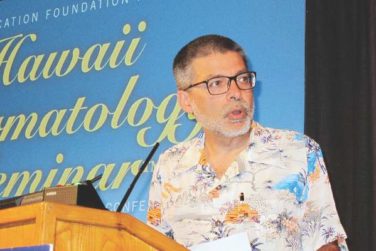FROM JAMA
Evidence is insufficient to assess whether universal screening for autism spectrum disorder (ASD) is in the best interest of public health, a federal task force has concluded.
The U.S. Preventive Services Task Force issued an “I statement” for insufficient evidence of whether there is a preponderance of either benefit or harm in screening a child for ASD when no previous alarms have been raised by that child’s parents or physicians. Instead, the task force recommends clinicians use their best judgment on a case-by-case basis. The full statement was published online in JAMA (doi: 10.1001/jama.2016.0081).
Guidance from other medical and pediatric organizations is mixed. The American Academy of Pediatrics recommends screening children between ages 18 and 24 months, while the American Academy of Family Physicians agrees evidence is insufficient to say one way or the other. The American Academy of Child and Adolescent Psychiatry ( J Am Acad Child Adolesc Psychiatry. 2014;53[2]:237-57 ) recommends all young children receive routine psychiatric assessments, including questions about ASD symptoms.
After reviewing 26 randomly assigned controlled studies of early intensive behavioral and developmental interventions for ASD in this cohort, the task force could see benefit only in the treatment of older children who had been flagged for the disorder by family members, clinicians, or teachers.
Citing a lack of studies focused on the clinical outcomes of children identified with ASD through screening, as well as treatment studies that were small and featured children clinically referred rather than detected through screening, the task force called on researchers to fill the gap.
“Large, good quality, randomized clinical trials of treatment that enroll young children with ASD identified through screening and that report patient-centered outcomes are critical to understanding the effects of screening. Treatment could be compared with a wait-list control, less intense treatment, or an alternative treatment,” task force members wrote.
Agreeing with the USPSTF’s decision, Dr. Michael Silverstein of Boston University and Dr. Jenny Radesky of the University of Michigan, Ann Arbor, wrote in an accompanying editorial, that the report, “presents an opportunity to motivate better, more relevant research” and demonstrates an understanding of the real-world complexities of primary care. “The USPSTF embraced this issue in all its complexity … and other stakeholders should do the same,” they wrote.
For clinicians seeking a screening tool, two screens the task force identified as useful were the M-CHAT/F and the M-CHAT-R/F (Modified Checklist for Autism in Toddlers, Revised With Follow-Up). Both use parent-rated scales that can lead to a follow-up interview and, if necessary, referral for diagnosis.
The U.S. Centers for Disease Control and Prevention estimated in 2010 that 1 in 68 children were affected by ASD, a 23% increase from 2008. The spike is as yet unattributable to any specific cause, according to the CDC.
Dr. Silverstein and Dr. Radesky did not report any relevant disclosures.
On Twitter @whitneymcknight





